This is your brain on movies, maybe
Wednesday | March 7, 2007 open printable version
open printable version
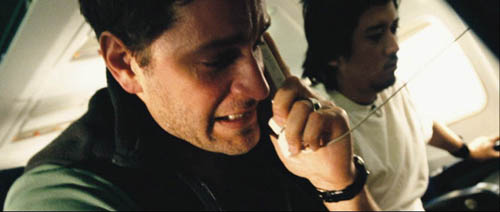
United 93.
From DB:
Normally we say that suspense demands an uncertainty about how things will turn out. Watching Hitchcock’s Notorious for the first time, you feel suspense at certain points–when the champagne is running out during the cocktail party, or when Devlin escorts the drugged Alicia out of Sebastian’s house. That’s because, we usually say, you don’t know if the spying couple will succeed in their mission.
But later you watch Notorious a second time. Strangely, you feel suspense, moment by moment, all over again. You know perfectly well how things will turn out, so how can there be uncertainty? How can you feel suspense on the second, or twenty-second viewing?
I was reminded of this problem watching United 93, which presents a slightly different case of the same phenomenon. Although I was watching it for the first time, I knew the outcomes of the 9/11 events it portrays. I knew in advance that the passengers were going to struggle with the hijackers and deflect the plane from its target, at the cost of all their lives. Yet I felt what seemed to me to be authentic suspense at key moments. It was as if some part of me were hoping against hope, as the saying goes, that disaster might be avoided. And perhaps the film’s many admirers will feel something like that suspense on repeated viewings as well.
Psychologist Richard Gerrig in his book Experiencing Narrative Worlds calls this anomalous suspense: feeling suspense when reading or viewing, although you know the outcome.
Anomalous suspense: Some theories
Anomalous suspense has been fairly important in the history of film. One of the most famous instances in the early years of feature film is the assassination of President Lincoln in Griffith’s Birth of a Nation (1915). Griffith prolongs the event with crosscutting and detail shots in a way that promotes suspense, even though we know that Booth will murder Lincoln. Anomalous suspense, of course, isn’t specific to movies; we can feel this way reading a familiar book or watching a TV docudrama about historical events. Young children listening to the story of Little Red Riding Hood seem to be no less wrought up on the umpteenth version than on the first.
This is very odd. How can it happen?
One answer is simple: What you’re feeling in a repeat viewing, or a viewing of dramatized historical events, isn’t suspense at all. Robert Yanal has explained this position here. He suggests that you’re responding to other aspects of the story. Maybe in rewatching Notorious you’re enjoying the unfolding romance, and you attribute your interest to suspense. And there are feelings akin to suspense that don’t rely on uncertainty–dread, for instance, in facing likely doom. (This is my example, not Yanal’s, but I think it’s plausible.) Another possibility Yanal floats is that on repeat viewings, you have actually forgotten what happens next, or how the story ends.
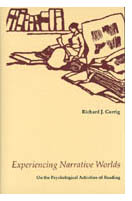 Yanal’s account doesn’t fully satisfy me, largely because I think that most people know what suspense feels like and attest to feeling it on repeat viewings. I did feel some dread in watching United 93, but I think that was mixed with a genuine feeling of suspense–a momentary, if illogical uncertainty about the future course of events. In any case, I didn’t forget what happened at the end; I expected it in quite a self-conscious way.
Yanal’s account doesn’t fully satisfy me, largely because I think that most people know what suspense feels like and attest to feeling it on repeat viewings. I did feel some dread in watching United 93, but I think that was mixed with a genuine feeling of suspense–a momentary, if illogical uncertainty about the future course of events. In any case, I didn’t forget what happened at the end; I expected it in quite a self-conscious way.
Richard Gerrig, the psychologist who gave anomalous suspense its name, offers a different solution. He posits that in general, when we reread a novel or rewatch a film, our cognitive system doesn’t apply its prior knowledge of what will happen. Why? Because our minds evolved to deal with the real world, and there you never know exactly what will happen next. Every situation is unique, and no course of events is literally identical to an earlier one. “Our moment-by-moment processes evolved in response to the brute fact of nonrepetition” (Experiencing Narrative Worlds, 171). Somehow, this assumption that every act is unique became our default for understanding events, even fictional ones we’ve encountered before.
I think that Gerrig leaves this account somewhat vague, and its conception of a “unique” event has been criticized by Yanal, in the article above. But I think that Gerrig’s invocation of our evolutionary history is relevant, for reasons I’ll mention shortly.
Suspense as morality, probability, and imagination
The most influential current theory of suspense in narrative is put forth by Noël Carroll. The original statement of it can be found in “Toward a Theory of Film Suspense” in his book Theorizing the Moving Image. Carroll proposes that suspense depends on our forming tacit questions about the story as it unfolds. Among other things, we ask how plausible certain outcomes are and how morally worthy they are. For Carroll, the reader or viewer feels suspense as a result of estimating, more or less intuitively, that the situation presents a morally undesirable outcome that is strongly probable.
When the plot indicates that an evil character will probably fail to achieve his or her end, there isn’t much suspense. Likewise, when a good character is likely to succeed, there isn’t much suspense. But we do feel suspense when it seems that an evil character is likely to succeed, or that a good character is likely to fail. Given the premises of the situation, the likelihood is very great that Alicia and Devlin will be caught by Sebastian and the Nazis, so we feel suspense.
What of anomalous suspense? Carroll would seem to have a problem here. If we know the outcome of a situation because we’ve seen the movie before, wouldn’t our assessments of probability shift? On the second viewing of Notorious, we can confidently say that Alicia and Devlin’s stratagems have a 100% chance of success. So then we ought not to feel any suspense.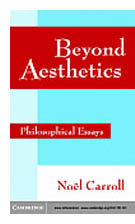
Carroll’s answer is that we can feel emotions in response to thoughts as well as beliefs. Standing at a viewing station on a mountaintop, safe behind the railing, I can look down and feel fear. I don’t really believe I’ll fall. If I did, I would back away fast. I imagine I’m going to fall; perhaps I even picture myself plunging into the void and, a la Björk, slamming against the rocks at the bottom. Just the thought of it makes my palms clammy on the rail.
Carroll points out that imagining things can arouse intense emotions, and his book The Philosophy of Horror uses this point to explain the appeal of horrific fictions. The same thing goes, more or less, for suspense. If the uncertainty at the root of suspense involves beliefs, then there ought to be a problem with repeat viewings. But if you merely entertain the thought that the story situation is uncertain, then you can feel suspense just as easily as if you entertained the thought that you were falling off the mountain top.
In other words, the relation between morality and probability in a suspenseful situation is offered not to your beliefs but to your imagination. When you judge that in this story the good is unlikely to be rewarded, you react appropriately–regardless of what you know or believe about what happens next. Carroll outlines this view in his book Beyond Aesthetics.
How are we encouraged to entertain such thoughts in our imagination? Carroll indicates that the film or piece of literature needs to focus our attention on the suspenseful factors at work, thus guiding us to the appropriate thoughts about the situation. There might, though, be more than attention at work here.
The firewall
In Consciousness and the Computational Mind (1987), psychologist Ray Jackendoff asked why music doesn’t wear out. When composers write tricky chord progressions or players execute startling rhythmic changes, why do those surprise or thrill us on rehearing? Similarly, you’ve seen the Müller-Lyer optical illusion many times, and you know that the two horizontal lines are of equal length. You can measure them.

Yet your eyes tell you that the lines are of different lengths and no knowledge can make you see them any other way. This illusion, in Jerry Fodor‘s phrase, is cognitively impenetrable.
We can reexperience familiar music or fall prey to optical illusions because, in essence, our lower-level perceptual activities are modular. They are fast and split up into many parallel processes working at once. They’re also fairly dumb, quite impervious to knowledge. Jackendoff suggests that our musical perception, like our faculties for language and vision, relies on
a number of autonomous units, each working in its own limited domain, with limited access to memory. For under this conception, expectation, suspense, satisfaction, and surprise can occur within the processor: in effect, the processor is always hearing the piece for the first time (245).
The modularity of “early vision”–the earliest stages of visual processing–is exhaustively discussed by Zenon W. Pylyshyn in Seeing and Visualizing: It’s Not What You Think (2006).
As students of cinema, we’re familiar with the fact that vision can be cognitively impenetrable. We know that movies consist of single frames, but we can’t see them in projection; we see a moving image.
Early vision works fast and under very basic, hard-wired assumptions about how the world is. That’s because our visual system evolved to detect regularities in a certain kind of environment. That environment didn’t include movies or cunningly designed optical illusions. So there might be a kind of firewall between parts of our perception and our knowledge or memory about the real world.
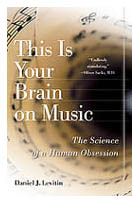 Daniel J. Levitin’s lively book, This is Your Brain on Music summarizes the neurological evidence for this firewall in our auditory system. When we listen to music, a great deal happens at very low levels. Meter, pitch, timbre, attack, and loudness are detected, dissected, and reconstructed across many brain areas. The processes runs fast, in parallel, and we have very little voluntary control of them, let alone awareness of them. Of course higher-level processes, like knowledge about the piece, the composer, or the performer, feed into the whole activity. But that’s inevitably running on top of the very fast uptake, disassembly, and reassembly of sensory information. Go here for more information on the book, including some music videos.
Daniel J. Levitin’s lively book, This is Your Brain on Music summarizes the neurological evidence for this firewall in our auditory system. When we listen to music, a great deal happens at very low levels. Meter, pitch, timbre, attack, and loudness are detected, dissected, and reconstructed across many brain areas. The processes runs fast, in parallel, and we have very little voluntary control of them, let alone awareness of them. Of course higher-level processes, like knowledge about the piece, the composer, or the performer, feed into the whole activity. But that’s inevitably running on top of the very fast uptake, disassembly, and reassembly of sensory information. Go here for more information on the book, including some music videos.
So here’s my hunch: A great deal of what contributes to suspense in films derives from low-level, modular processes. They are cognitively impenetrable, and that creates a firewall between them and what we remember from previous viewings.
A suspense film often contains several very gross cues to our perceptual uptake. We get tension-filled music and ominous sound effects, such as low-bass throbbing. We get rapid cutting and swift camera movements. Often the shots are close-ups, as in Notorious‘s wine-cellar scene and during the characters’ final descent of the staircase. Close-ups concentrate our vision on one salient item, creating the attentional focus Carroll emphasizes. The shots are often cut together so fast that we barely have time to register the information in each one.
This isn’t to say that the action itself has to be fast. The action in the Hitchcock scenes isn’t rapid, but its stylistic treatment is. In typical suspense scenes, our “early vision” and “early audition,” biased toward quick pickup, are given rapid-fire bursts of information while our slower, deliberative processes are put on hold. This is happening in the Birth of a Nation assassination scene, as well as in the frantic second half of United 93.
Further, what is shown can push our processing as well. Seeing people’s facial expressions touches off empathy and emotional contagion, perhaps through mirror neurons.
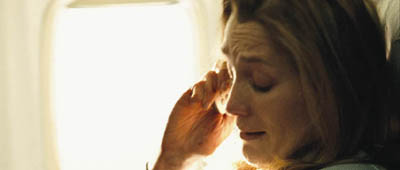
This tendency may explain why we can, momentarily, feel a wisp of empathy for unsympathetic characters. When their expressions show fear, we detect and resonate to that even if we aren’t rooting for them to succeed.
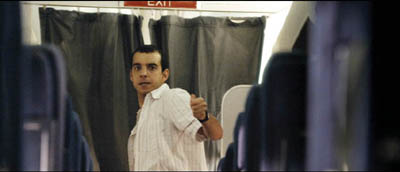
We may also be responding to some very basic scenarios for suspenseful action. Imagine dangling at a great height; “hanging” is the root of the word suspense. Or imagine hurtling toward an obstruction, or being stalked by an animal, or being advanced upon by a looming figure. As prototypes of impending danger, these events may in themselves trigger a minimal feeling of suspense. And such situations are part of filmic storytelling from its earliest years.
Maybe we’re predisposed to find facial expressions and dangerous situations salient because of our evolutionary history, or maybe they’re learned from a very young age. Either way, such responses don’t require much deliberate thinking. They just trigger rapid responses that we can reflect upon later.
Stylistic emphasis and prototype situations surely help the attention-focusing that Carroll discusses. But I’m suggesting something stronger: Many of these cues don’t merely guide our attention to the critical suspense-creating factors in the scene. These cues are arresting and arousing in themselves. They trigger responses that, in the right narrative situation, can generate suspense, regardless of whether we’ve seen the movie before.
Beyond these cues, of course we have to understand the story to some degree. Probably some of the aspects of storytelling that Carroll, Gerrig, and others (including me) have highlighted come into play. As Hitchcock famously pointed out, suspense sometimes depends on telling the viewer more than the character knows. We have to see the bomb under the table that the character doesn’t know about. Suspense is also conjured up by Carroll’s ratio of morality to probability, our real-world understanding of deadlines, and other higher-order aspects of comprehension. In addition, our knowledge of how stories are typically told probably shapes our uptake. We expect suspense to be a part of a film, and so we’re alert for cues that facilitate it.
Involuntary suspense
So I’m hypothesizing that part of the suspense we feel in rewatching a film depends on fast, mandatory, data-driven pickup. That activity responds to the salient information without regard to what we already know.
According to this argument, the sight of Eve Kendall dangling from Mount Rushmore will elicit some degree of suspense no matter how many times you’ve seen North by Northwest, and that feeling will be amplified by the cutting, the close-ups, the music, and so on. Your sensory system can’t help but respond, just as it can’t help seeing equal-length lines in the pictorial illusion. For some part of you, every viewing of a movie is the first viewing.
This tendency may hold good for other emotions than suspense. In the psychological jargon I adopted in Narration in the Fiction Film, experiencing a narrative is likely to be both a bottom-up process and a top-down process. Suspense and other emotional effects in film may depend not only on conceptual judgments about uncertainty, likelihood, and so on. They may also depend on quick and dirty processes of perception that don’t have much access to memory or deliberative thinking.
Film works on our embodied minds, and the “embodied” part includes a wondrous number of fast, involuntary brain activities. This process gives filmmakers enormous power, along with enormous responsibilities.
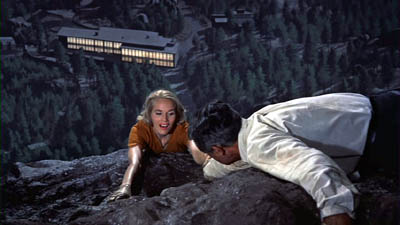
PS: 9 March. Jason Mittell writes a comment, based on his recent research on TV fans’ attitudes toward spoilers, at his site here. More later, I hope, when I have a chance to assimilate his argument.













